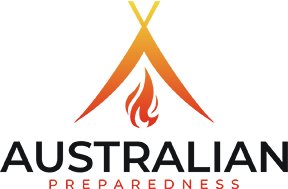No products in the cart.
Panic is the last emotion you want to feel during an emergency evacuation. Prepping for an emergency evacuation should be a prerequisite in Australia, especially since bushfires and cyclones are more of a “when,” not “if,” kind of situation. If you have small children and pets, this is even more important. Recently, we wrote about how to introduce your children to emergency preparedness, and how to prepare your dogs for an emergency situation. Read those blogs first, because both parties will need a decent foundation in the art of prepping so that they do not freeze when a real emergency happens.
When you’re prepping, never forget to include dog food. The same rules apply to dog food as they do human food: rotate them out periodically so that the freshest cans are in the front. You’ll want to keep all of your emergency bags by the door, in a secured area. This could be in your coat closet, in a drawer, anywhere, just make sure that it is there. You should also make sure that you have a crate ready for your dog (or cat!) and that it is crate trained so you leave the house without any problems.
Have your emergency bag and food by the door
Who is responsible for what?
This is especially important. Who is responsible for grabbing the emergency bag? Who will hold onto the cash? These are important questions that need to be answered now so that there is no confusion when you’re leaving. Everyone will be delegated a responsibility: someone will be responsible for holding onto the money, another will be responsible for the emergency bag, and who will grab any important family heirlooms. Don’t let any of this be a last second free-for-all. Give everyone their own responsibility so that nothing important or valuable is lost.
Always make sure your car has a full tank of gas. Easier said than done, but in the event of a bushfire or cyclone, you need to be ready to leave the situation within a few minutes. Do you know the basics of your car? Do you know how to change a tire or your oil? These are things you need to ask yourself, because in the event of an emergency evacuation, there won’t be anyone to help you unless you’re lucky. Before you leave, check the tire pressure of all the tires, and make sure you have a spare tire. You can also pack extra fuel cans and other fluids your car may need.
Is your car ready?
Practice, Practice, Practice!
Now that everyone knows their responsibility, it is time to practice. Knowing isn’t enough, you need to put the knowledge to use. You should have “drills” at least once a month to go over the basics, especially for your children. Make sure you can all escape in at least 10 minutes. If you take too long, you’ll need to practice again. Do this drill at least once a month so that everyone knows what their place is and what is going on.
As members of the prepping community and consultants on emergency preparedness, we want every family to feel at ease and in control of the environment around them. Instead of letting fear control you, take control of your fear. Always have a backup plan. By following these tips, you are well on your way to a plan that will work for you and your family.

